The specifications of NVIDIA’s next-gen Blackwell graphics cards have leaked out a few times in the last few months. From what we know, the GeForce RTX 5080 and 5090 will feature roughly the same shader count as their predecessors with identical memory buses in all but one case. The GeForce RTX 5090 will leverage the GB202 GPU consisting of 12 GPCs (Graphics Processing Clusters), each packing 8 TPCs (Texture Processing Clusters). A TPC includes two SMs (Streaming Multiprocessors) or 256 FP32 cores, implying a total shader count of 24,576 for the GB202.
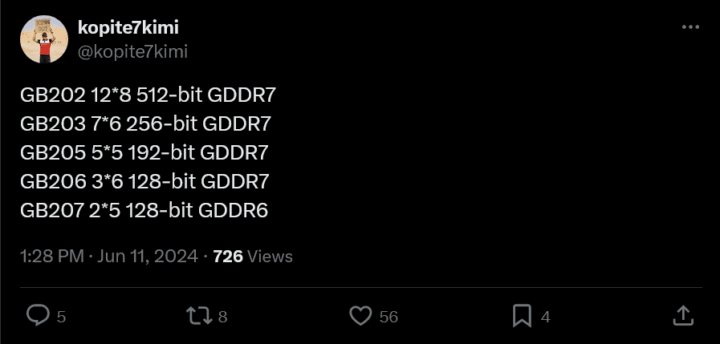
The GB202 will be paired with 16 GDDR7 memory dies via a 512-bit bus, amounting to 28 GB to 32 GB of graphics memory, depending on the bus width. Depending on the performance targets, NVIDIA can decide to equip the RTX 5090 with a 384-bit, 448-bit, or the whole 512-bit memory bus. When paired with 28 Gbps of GDDR7 graphics memory across a 512-bit bus, we get an external bandwidth of 1568 GB/s.
On the shader side, we expect 17000 to 20000 FP32 cores (133 to 156 SMs), implying 2 fully or 4 partially disabled GPCs. The L2 cache should scale with the shader and memory bus, coming in at around ~128 MB for the full-fat die.
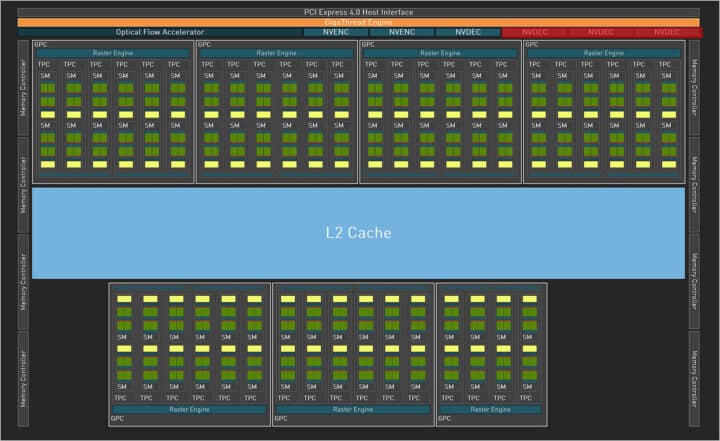
The GeForce RTX 5080 allegedly features the same shader configuration as the 4080 with 7 GPCs, each featuring 6 TPCs or 12 SMs. This produces an overall core count of 10752, up from 10240 on the AD103 and the RTX 4080 Super. The bus width will remain the same at 256-bit, but the faster GDDR7 memory should result in an external bandwidth of up to 896 GB/s (up from 736 GB/s on the RTX 4080 Super).
The GB205 will power the RTX 5070 Ti but looks smaller than the AD104 with a shader count of 6400 or 50 SMs and 5 GPCs. The GeForce RTX 4070 Ti featuring the full-fledged AD104 GPU features 7680 cores or 60 SMs. The memory bus width is going the remain unchanged at 192-bit, but the faster GDDR7 memory modules should offer a nice bandwidth uplift (504.2 GB/s -> 673 GB/s).
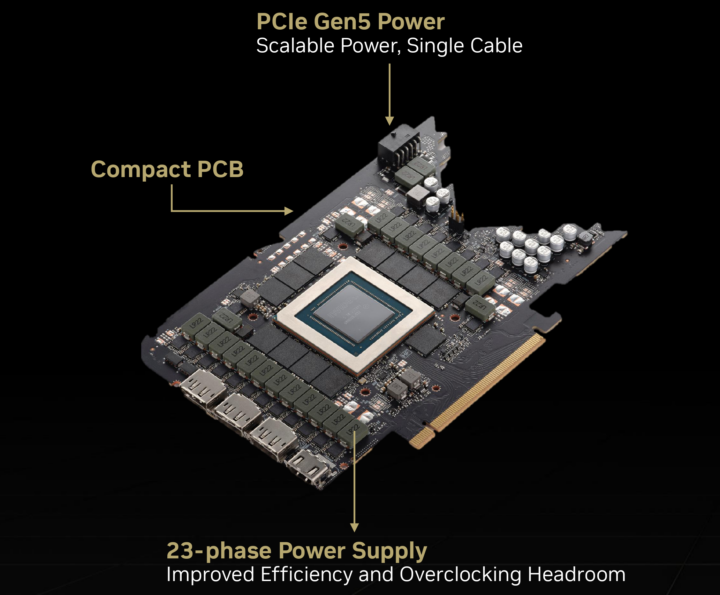
The GB206 will be used for the RTX 5060 Ti and the RTX 5060. We’re looking at shader counts of 4608 for the higher-end 60-class GPUs, slightly more than the 4060 Ti (4352). A 128-bit memory bus will pair the RTX 5060 Ti with 8/16 GB GDDR7 modules, producing a bandwidth of 448 GB/s, up from 288 GB/s. The RTX 5060 will likely leverage a cut-down GB206 die, leaving the GB207 for the RTX 5050 or mobility variants.
Here’s an excellent table from @harukaze5719 comparing the Ada Lovelace and Blackwell shader counts:
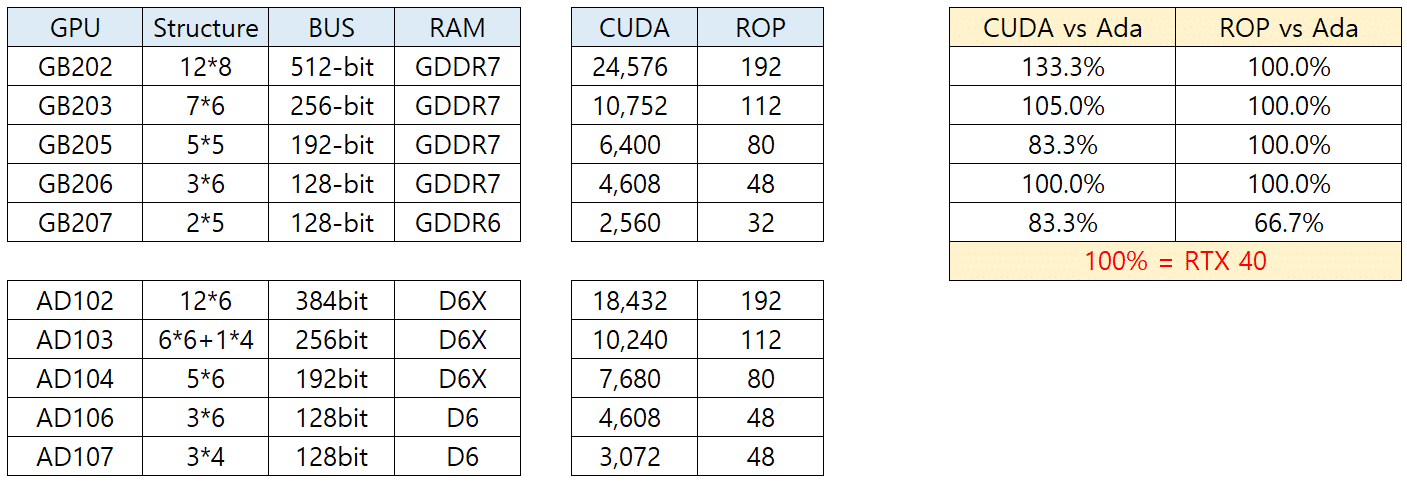

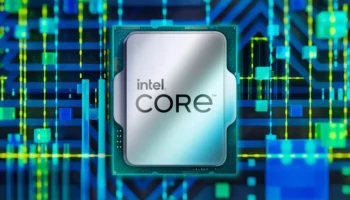 Intel i9-14900K/13900K CPUs Unstable even with Baseline Power Profile: Crashes in Games Persist
Intel i9-14900K/13900K CPUs Unstable even with Baseline Power Profile: Crashes in Games Persist AMD Ryzen 7 8840U/7840U is ~2x Faster than the Snapdragon X Elite in Gaming (At the Same Power)
AMD Ryzen 7 8840U/7840U is ~2x Faster than the Snapdragon X Elite in Gaming (At the Same Power) AMD Ryzen AI 300 “Strix Point” Uses Cut-Down CPU Cores & Similar Instruction Throughput as Zen 4
AMD Ryzen AI 300 “Strix Point” Uses Cut-Down CPU Cores & Similar Instruction Throughput as Zen 4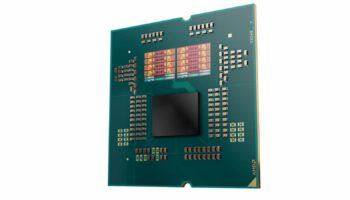 AMD Ryzen 9000 vs Intel 15th Gen/Core Ultra 300 CPUs Specs, Pricing, and Release Date
AMD Ryzen 9000 vs Intel 15th Gen/Core Ultra 300 CPUs Specs, Pricing, and Release Date